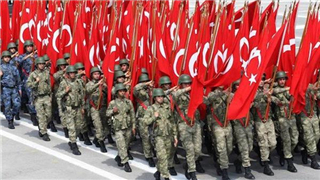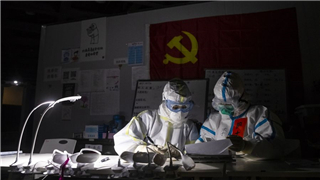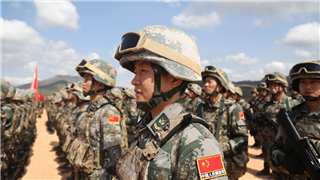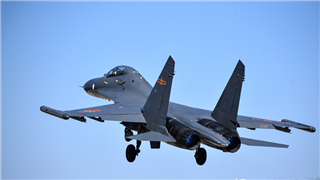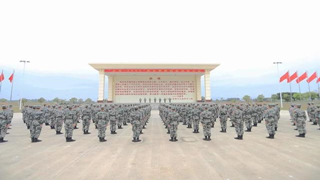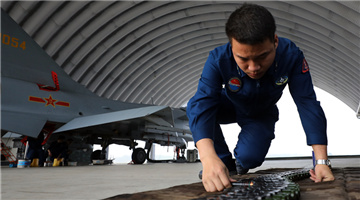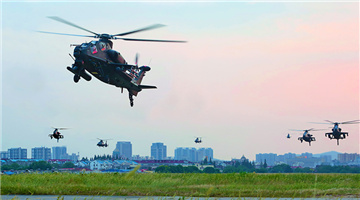By Qaisar Sajjad

The start of year 2020 witnessed a challenging outbreak of Corona virus, termed as COVID-19 by the WHO, in the city of Wuhan, China. In containment of the outbreak, Chinese national crisis management mechanism has been put to the real test. Upon the detection of a cluster of pneumonia cases of unknown etiology in Wuhan, China launched national emergency response. A Central Leadership Group for Epidemic Response and the Joint Prevention and Control Mechanism of the State Council were established. Following four measures were immediately put into effect by Chinese government and military to contain the epidemic as close to the source as possible:
First, improving public health awareness. During the early phase of the outbreak, the main focus was on the spread of disease from Wuhan and other priority areas of Hubei Province to other provinces and areas. The overall aim, therefore, was to control the source of infection, block transmission and prevent further spread. All sources of media were utilized to enhance public awareness on the extent of threat and initial prevention measures without creating undue fear and panic. However, a few international media groups even utilized such a catastrophe to target Chinese handling of crisis in negative connotations in baseless and irresponsible manner.
Second,implementing emergency medical response. The government made coordinated efforts to make the emergency medical response effective, especially at the epicenter of Wuhan City and Hubei province. Diagnostic testing kits were developed, and wildlife and live poultry markets were placed under strict supervision and control measures. Two 1000- bed hospitals were built within days to reduce the intensity of the epidemic and to provide the Medicare to maximum number of affected people. The focus was on actively treating patients, reducing deaths, and preventing spread. In other provinces, the focus had been on preventing influx, curbing the spread of the disease and implementing joint prevention and control measures.
Third, coordinating utilization of national resources. All the possible resources including development of medical infrastructure and placement of medical personnel, including those from PLA at and close to the epicenter were mobilized. Such measures enabled reducing clusters of cases, thoroughly controlling the epidemic, and striking a balance between epidemic prevention and control and scientific evidence-based policy implementation. The outstanding speed with which Chinese scientists and public health experts isolated the virus, established diagnostic tools, and determined key transmission parameters, such as the route of spread and incubation period, provided the vital evidence base for China's strategy, gaining invaluable time for the response.
Forth, beefing up national resolve in fighting the outbreak. At the individual level, the Chinese people have responded to this outbreak with audacity and conviction. They accepted and adhered to the national containment measures with great patience, including the suspension of public gatherings, stay at home advisories or travel restrictions. Chinese people have made arduous efforts, and the nation has always stayed optimistic and resilient, and carried a conviction that it will achieve the final victory over the epidemic. The positive mindedness and resilience of the Chinese people truly demonstrated the spiritual power of a community with a shared future for mankind.
What we can learn from Chinese response in fighting COVID-19 epidemic?
Containing such a large population in respective areas to alleviate the chances of the epidemic spread was praiseworthy.China has undertaken bold and effective campaign in containing COVID-19, thereby setting a viable example for other countries to emulate. A few of suggested ways forwarded for all the countries around the globe, while considering such an epidemic a considerable threat to their national security, are enumerated as follows:
First, strengthening emergency management mechanisms. All countries need to remain prepared to immediately activate the highest level of emergency response mechanisms to trigger focused approach, essential for early containment of COVID-19 outbreak.
Therefore, all measures must be put in place beforehand to ensure the safety of healthcare personnel as initial responders. Remarkably, more than 40,000 health care workers (HCW) have been deployed from other areas of China to support the response in Wuhan.
It was due to the hectic efforts of the medical hierarchy under CPC direction in China that transmission within health care apparatus and amongst health care professionals did not appear to be a major problem of COVID-19.
Therefore, for any country around the globe, emergency diagnostic measures, backup scientific research methods, standby medical teams and apparatus and requisite medicine and equipment stocks need to be reconciled with during the peacetime for immediate deployment.
Second, generating cohesive national response mechanism. China had been extremely efficient in concentrating all required national resources to fight the disease as close to the epicenter as possible. Cohesiveness of the regional governments, national departments and wholesome response mechanisms need to be tailored and tested beforehand to remain effective in the time of need.
China's national preparedness plans including knowledge on the effectiveness of non-pharmaceutical measures against COVID-19, including rapid detection, large scale case isolation and respiratory support capacities, and rigorous contact tracing and management remains the efficient precedent for all countries to emulate against such catastrophe.
Third, enforcing rigorous infection prevention and control measures. In order to alleviate the prospects of epidemic entering the healthcare systems, countries should enforce rigorous application of infection prevention and control measures in all healthcare facilities, especially in emergency departments and outpatient clinics. Scientific research methodology needs to be robust in order to facilitate response and risk management decisions including household and health care facility studies, epidemiologic surveys and rigorous investigation of the animal-human interface.
A centralized research program must be established beforehand to fast-track the most promisingly quick diagnostics, testing of potential antivirals and vaccine protocols, and coordinated engagement in selected multi-country trials. Lead of Chinese expertise in this context had better to be solicited by multi-national medical consortiums.
Forth, plug-in knowledge gaps. Since the start of the COVID-19 outbreak, there have been extensive attempts to better understand the virus and the disease in China. It is significant that how much knowledge about a new virus has been gained in such a short time. However, as with all new epidemics, key knowledge gaps exist. Such gaps have to be eradicated by an all-inclusive strategy.
Transmissibility, risk factors for infection and disease progression, surveillance, diagnostics, clinical management of severe and critically ill patients, and the effectiveness of prevention and control measures must be clearly spelled out. The timely filling of these knowledge gaps is imperative to enhance control strategies.
Fifth, ensuring transparency among masses. Magnificent efforts by Chinese Government, in this regard, which enabled the masses to take self-prevention measures to help contain the epidemic must be taken as a role model. Recognizing the fact that COVID-19 has been a new disease, it has been proven without doubt in China that outbreaks can be managed with the right response and that the vast majority of infected people will recover. Rapid assessment of the public understanding of COVID-19, adjustment of national health promotion materials and integration of medical response hierarchy with the media sources remained a lynchpin in ensuring transparency in China.
Sixth, undertaking coordinated global research in tackling epidemics. A huge array of COVID-19 studies, scientific research projects and R&D efforts are ongoing in China and globally. This needs to be coordinated and prioritized worldwide,to alleviate any prospects of attention or resources lapse so as to cut precious timelines. While progress is underway, the urgency of the COVID-19 situation demands an even more accurate prioritization of targeted research in the areas of diagnostics, therapeutics and vaccine development. It needs to be recognized by all countries that true solidarity and collaboration is essential among nations to tackle this common threat that COVID-19 and other such like epidemics.
So far, over 22,000 people have died with over 502,000 cumulative confirmed cases worldwide, and the numbers are still rising each passing day. With the first case reported from China, the pandemic has now spread to other countries like, Iran, South Korea, Italy and the US, while Chinese figures being reduce dsignificantly. The efforts taken by China in containment of this epidemic have been praised by all the World leaders and media. Every country has to be a part of this war against this virus to eliminate fear and unrest in respective societies.

